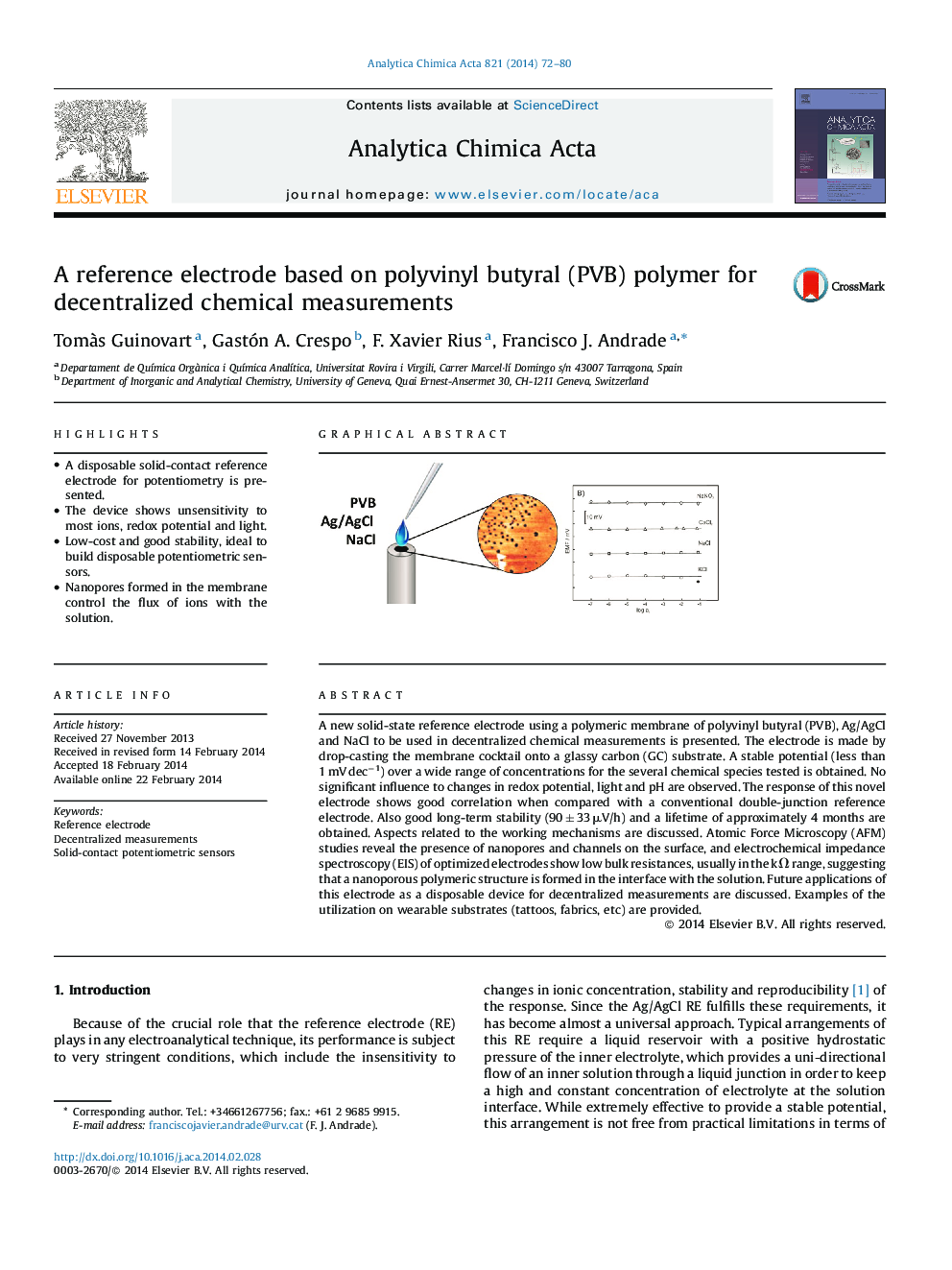| Article ID | Journal | Published Year | Pages | File Type |
|---|---|---|---|---|
| 1164954 | Analytica Chimica Acta | 2014 | 9 Pages |
•A disposable solid-contact reference electrode for potentiometry is presented.•The device shows unsensitivity to most ions, redox potential and light.•Low-cost and good stability, ideal to build disposable potentiometric sensors.•Nanopores formed in the membrane control the flux of ions with the solution.
A new solid-state reference electrode using a polymeric membrane of polyvinyl butyral (PVB), Ag/AgCl and NaCl to be used in decentralized chemical measurements is presented. The electrode is made by drop-casting the membrane cocktail onto a glassy carbon (GC) substrate. A stable potential (less than 1 mV dec−1) over a wide range of concentrations for the several chemical species tested is obtained. No significant influence to changes in redox potential, light and pH are observed. The response of this novel electrode shows good correlation when compared with a conventional double-junction reference electrode. Also good long-term stability (90 ± 33 μV/h) and a lifetime of approximately 4 months are obtained. Aspects related to the working mechanisms are discussed. Atomic Force Microscopy (AFM) studies reveal the presence of nanopores and channels on the surface, and electrochemical impedance spectroscopy (EIS) of optimized electrodes show low bulk resistances, usually in the kΩ range, suggesting that a nanoporous polymeric structure is formed in the interface with the solution. Future applications of this electrode as a disposable device for decentralized measurements are discussed. Examples of the utilization on wearable substrates (tattoos, fabrics, etc) are provided.
Graphical abstractFigure optionsDownload full-size imageDownload as PowerPoint slide
